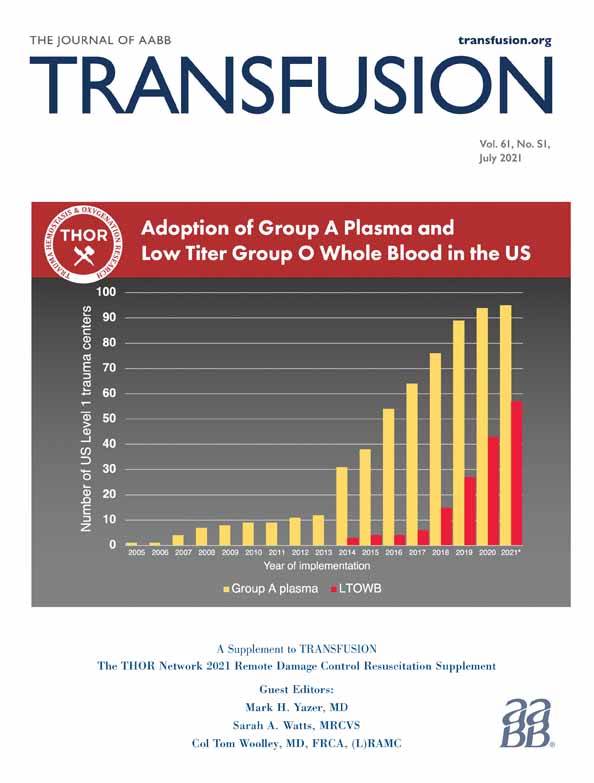Survey to inform trial of low-titer group O whole-blood compared to conventional blood components for children with severe traumatic bleeding
Abstract
Background
Low-titer group O whole-blood (LTOWB) is being used for children with life-threatening traumatic bleeding. A survey was conducted to determine current LTOWB utilization and interest in participation in a randomized control trial (RCT) of LTOWB versus standard blood component transfusion in this population.
Study design and methods
Transfusion medicine (TM) directors and pediatric trauma directors at 36 US children's hospitals were surveyed by e-mail in June 2020. Hospitals were selected by participation in the Massive Transfusion Epidemiology and Outcomes in Children Study or being among the largest 30 children's hospitals by bed capacity per the Becker Hospital Review.
Results
The response rate was 83.3% (30/36) from TM directors and 88.9% (32/36) from trauma directors. The median of massive transfusion protocol activations for traumatic bleeding was reported as 12 (IQR 5.8–20) per year by TM directors. LTOWB was used by 18.8% (6/32) of trauma directors. Survey responses indicate that 86.7% (26/30) of TM directors and 90.6% (29/32) of trauma directors either moderately or strongly agree that a LTOWB RCT is important to perform. About 83.3% (25/30) of TM directors and 93.8% (30/32) of trauma directors were willing to participate in the proposed trial. About 80% (24/30) of TM directors and 71.9% (23/32) of trauma directors would transfuse RhD+ LTOWB to male children, but fewer would transfuse Rh + LTOWB to females [20% (6/30) TM directors and 37.5% (12/32) of trauma directors].
Conclusions
A majority of respondents supported an RCT comparing LTOWB to component therapy in children with severe traumatic bleeding.
CONFLICT OF INTEREST
Spinella is Consultant to Secure Transfusion Services, Consultant to Haima, and Consultant to New Health Sciences.




